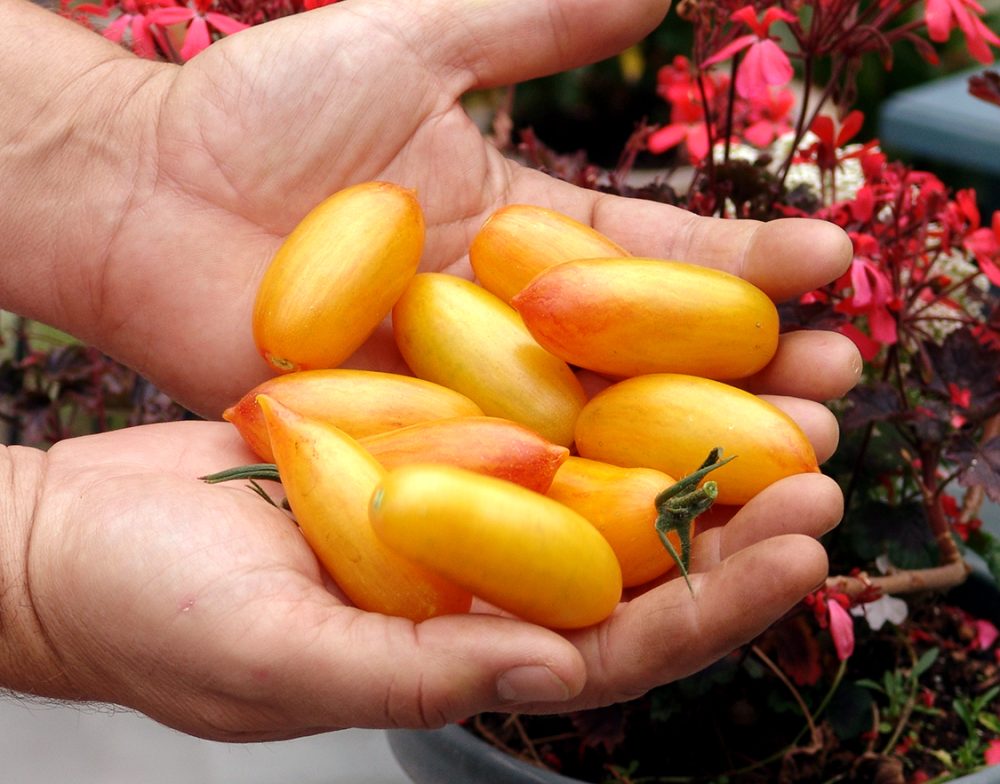Chef’s Choice is a series of tomatoes that are known for crack resistance. good flavor, prolific harvests and smooth firm flesh. Each color has it’s own characteristics. In some trials each plant produced 30 or more fruit. Indeterminate vines reach 5 feet and have a good disease resistance package. Are they really a Chef’s Choice? I don’t know the answer to that. However, I am happy to grow them this year.

Producing large 10 -12 ounce flattened beefsteak fruits with beautiful pinkish-red stripes inside. Sweet with great flavor and texture. Each plant can produce about 30 fruits per season. Indeterminate, main season

This is a beefsteak tomato with a dark green/brown/black hue. Vigorous, healthy plants were early to set and have a meaty interior with great flavor. This hybrid boasts prolific yields. Indeterminate, main season

Rich, heirloom flavor, these bright orange 9-12 oz. fruits are perfect fresh or cooked. This hybrid-heirloom, adapted from the tasty but late ‘Amana Orange’ will quickly become a favorite. Very prolific. Disease-resistant plants resist cracking. Indeterminate, main season

Large, 12–14 ounce pink beefsteaks are very prolific. With a fine balance of sweet to acid flavor, they are great for soups, stewing, or sauces. Indeterminate, main season

Fans of Cherokee Purple will fall in love with this exceptionally flavored heirloom hybrid. Attractive, flattened globe shaped, 9 to 10 oz. fruits are firm, smooth and truly purple inside and out. Indeterminate, main season

This globe shaped beefsteak tomato is firm and fleshy with a beautiful red color and dark green leaves A heavy producer. It offers great foliage protection against the summer sun. Superior disease resistance. Indeterminate, main season

Gorgeous, 10 oz beefsteak-type, fruits have a sweet, citrus-like flavor with just the right amount of acid and the perfect tomato texture. Plants produce loads of golden yellow fruits. Indeterminate, main season









